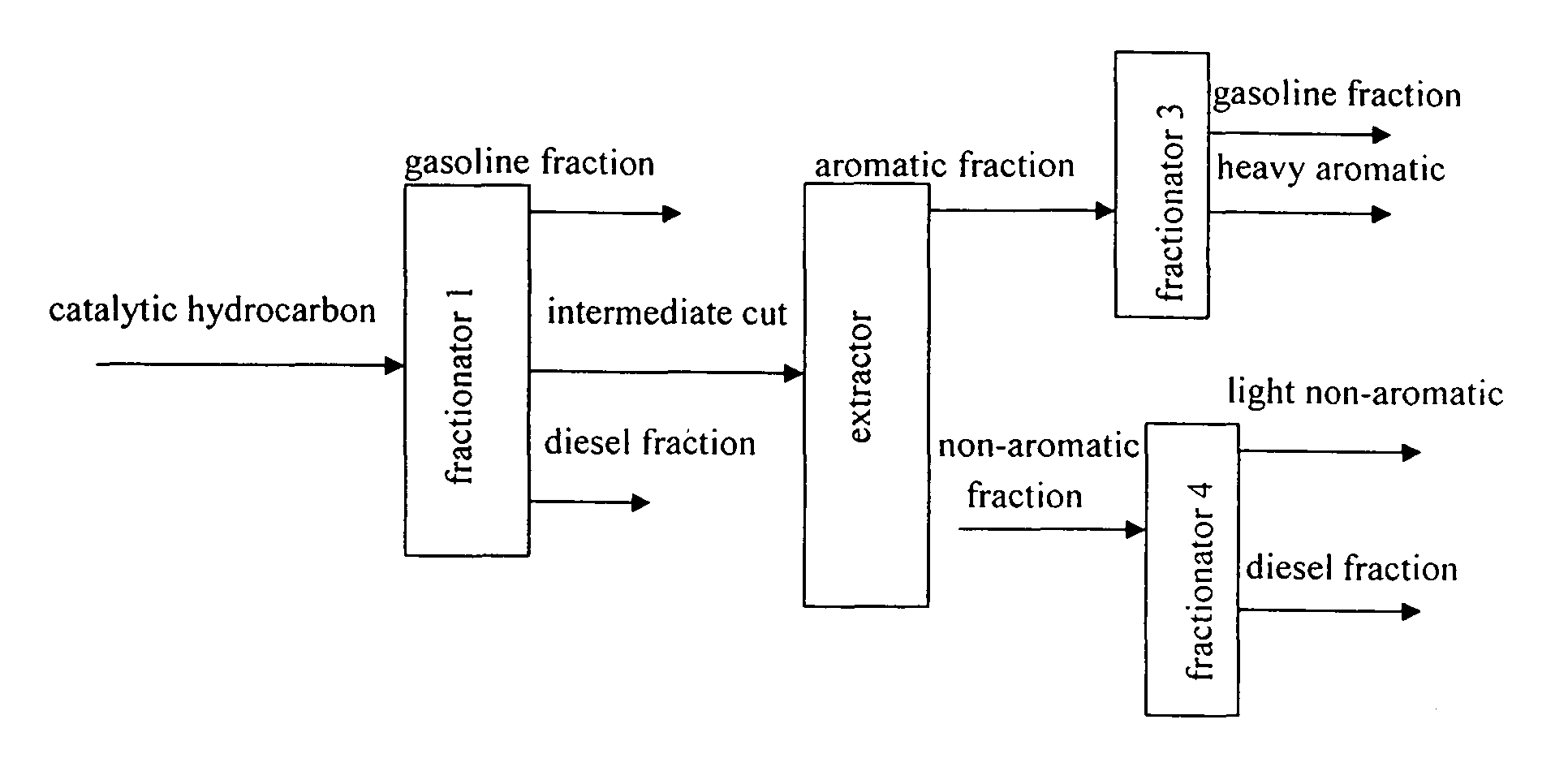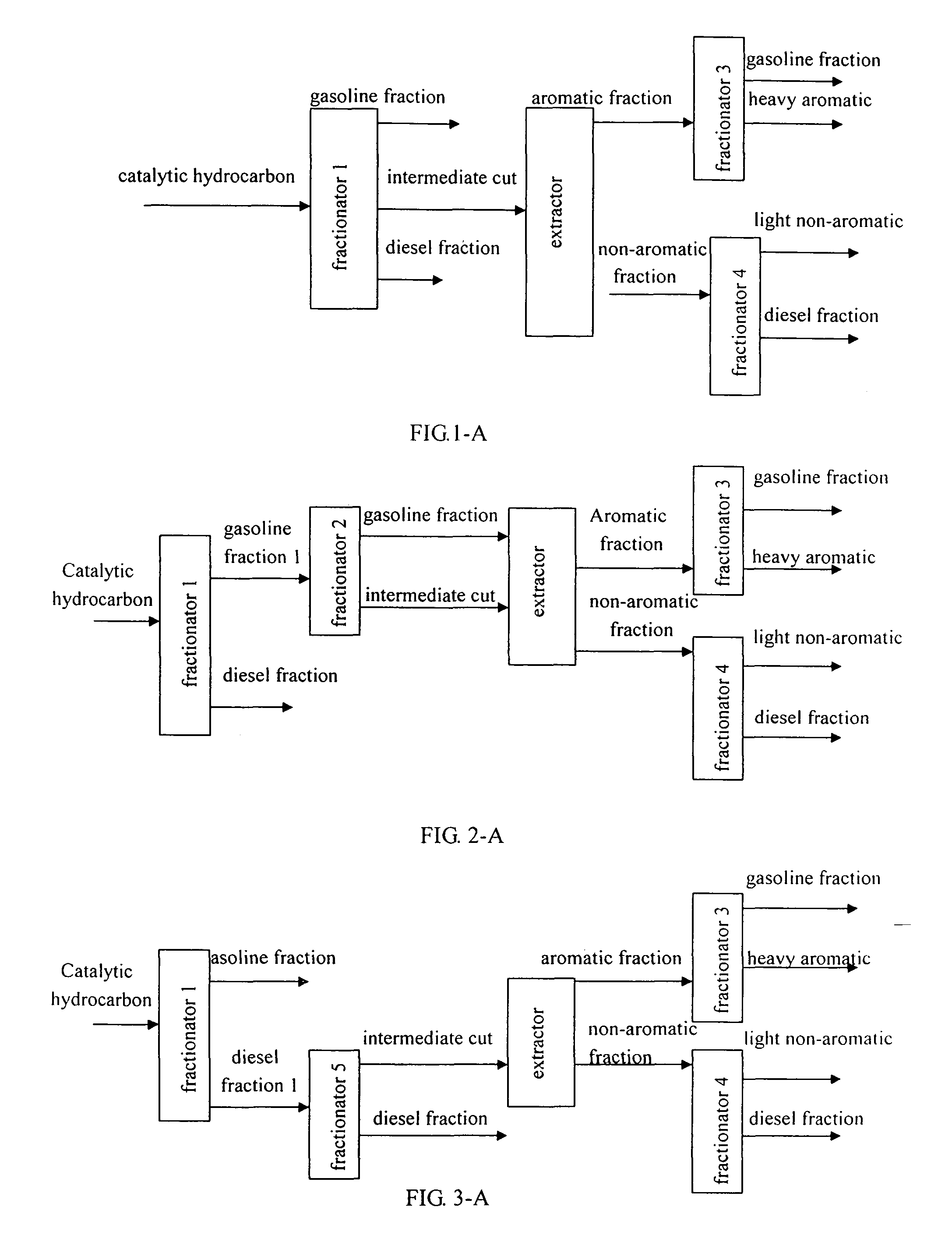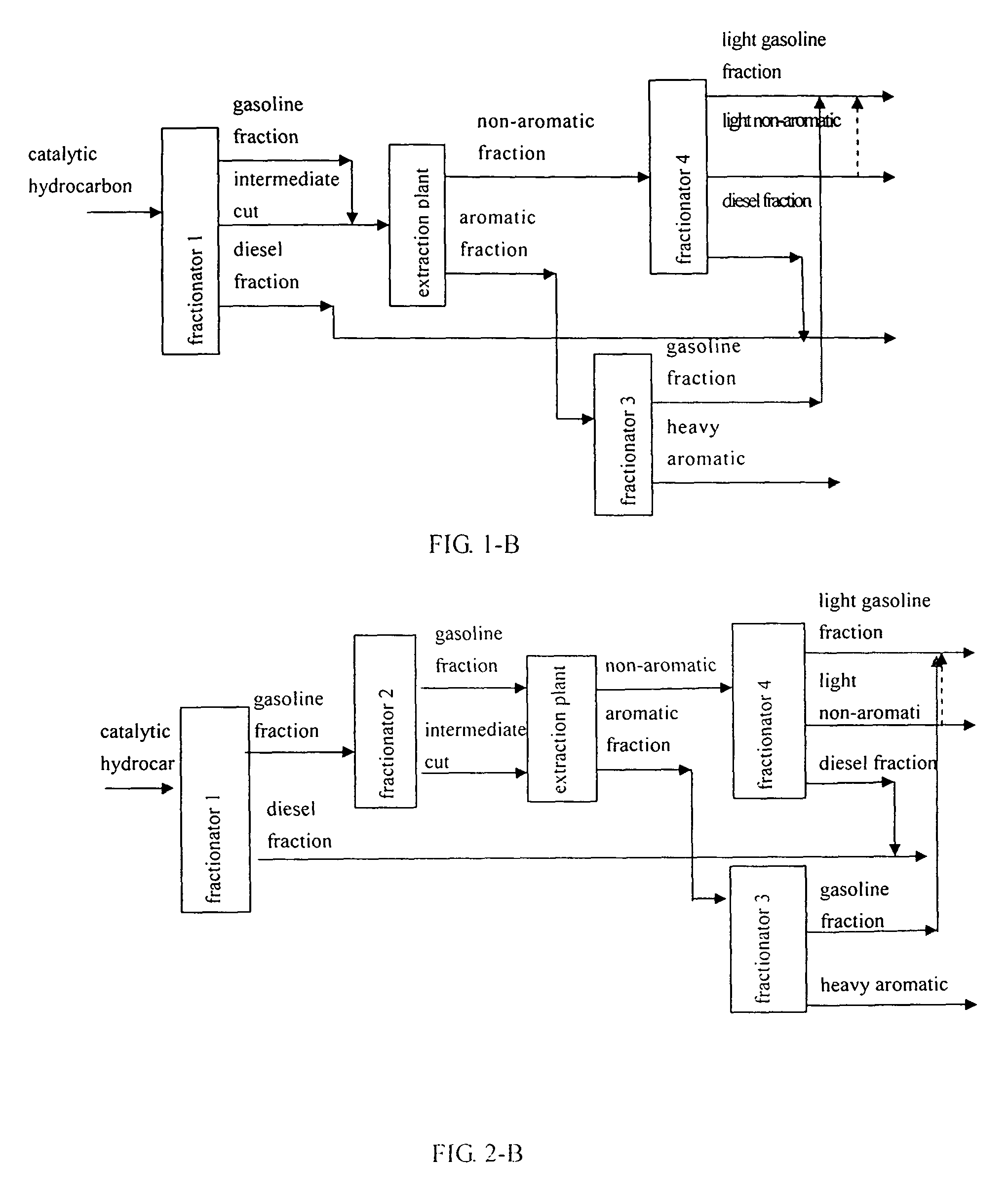Method for recombining catalytic hydrocarbons
a technology of catalytic hydrocarbons and hydrocarbons, which is applied in the direction of hydrocarbon distillation, hydrocarbon oil treatment products, and separation processes, etc., can solve the problems of insufficient diesel fuel demand, the ratio of gasoline and diesel fuel produced does not match the market requirement, and the product grade is too narrow.
- Summary
- Abstract
- Description
- Claims
- Application Information
AI Technical Summary
Benefits of technology
Problems solved by technology
Method used
Image
Examples
embodiment 1-a
[0059]See FIG. 1-A, the paraffine-based catalytic feed and the feedback oil produce catalytic hydrocarbon under there catalysis of LCS catalyst produced by Lanzhou Catalyst Plant, China. It is fractionated at the fractionator 1. The overhead temperature of the fractionator 1 is 80° C., the diesel fuel outlet temperature is 240° C., the bottom temperature is 370° C., the overhead pressure is 0.1 MPa, the bottom pressure is 0.12 MPa; One side cut is added at the middle section of the fractionator 1 to draw the intermediate fraction. The side cut temperature is 190° C., the distillation range of the intermediate fraction is 120˜210° C. The intermediate fraction is pumped to an extractor for solvent extraction, the solvent used is sulfolane, the extraction temperature is 80° C., and the extraction pressure is 0.4 MPa. Solvent weight ratio (solvent / feed) is 4.8. Aromatic and non-aromatic hydrocarbons are separated; The aromatic hydrocarbon gofraction go to the middle section of fractiona...
embodiment 2-a
[0060]The intermediate base atmosphere residual heavy oil catalytic feed and the feedback oil produce the catalytic hydrocarbon under the catalysis of LANET-35 catalyst produced by Lanzhou Catalyst Plant, China. The catalytic hydrocarbon is catalytic cracking heavy oil. It is fractionated at the fractionator 1. The overhead temperature of the fractionator 1 is 80° C., diesel fuel outlet temperature is 240° C., bottom temperature is 370° C., overhead pressure is 0.1 MPa, bottom pressure is 0.12 MPa; three side cuts are added at the middle section of the fractionator 1 to draw the intermediate fraction. The three side cut temperature from up to down is 170, 180, 190° C., the distillation range of the intermediate fraction is 80˜120° C., 120˜165° C., 165˜220° C., the intermediate fraction got from the three distillation range is pumped to the same extractor for solvent extraction. The solvent is tetraethylene glycol, the extraction temperature is 85° C., and the extraction pressure is ...
embodiment 3-a
[0061]The cycloalkyl heavy oil catalytic feed and the feedback oil produce the catalytic hydrocarbon under the catalysis of LANET-35 catalyst produced by Lanzhou Catalyst Plant. The catalytic hydrocarbon is cycloalkyl catalytic cracking heavy oil. It is fractionated at the fractionator 1. The overhead temperature of the fractionator 1 is 80° C., the diesel fuel outlet temperature is 240° C., the bottom temperature is 370° C., the overhead pressure is 0.1 MPa, the bottom pressure is 0.12 MPa; two side cuts are added at the middle section of the fractionator 1 to draw the intermediate fraction. The two side cut temperature from up to down is 180, 190° C., the distillation range of the intermediate fraction is 80˜165° C., 165˜220° C. respectively. The intermediate fractions got from two distillation ranges are pumped to the two same extractor for solvent extraction. The solvent is N-formoxyl morphinone, the extraction temperature is 85° C., and extraction pressure is 0.4 MPa. Solvent w...
PUM
| Property | Measurement | Unit |
|---|---|---|
| weight ratio | aaaaa | aaaaa |
| weight ratio | aaaaa | aaaaa |
| temperature | aaaaa | aaaaa |
Abstract
Description
Claims
Application Information
 Login to View More
Login to View More - R&D
- Intellectual Property
- Life Sciences
- Materials
- Tech Scout
- Unparalleled Data Quality
- Higher Quality Content
- 60% Fewer Hallucinations
Browse by: Latest US Patents, China's latest patents, Technical Efficacy Thesaurus, Application Domain, Technology Topic, Popular Technical Reports.
© 2025 PatSnap. All rights reserved.Legal|Privacy policy|Modern Slavery Act Transparency Statement|Sitemap|About US| Contact US: help@patsnap.com



